Pauline Oliveros was a vital creator of new music, a renowned electronic art music innovator and composer, an accordionist, founder of deep listening and other experimental practices, a genius inventor of sound-making software, and a fearless champion on issues of gender, race, ability, and sexual orientation. Following is an essay on her “Sonic Meditations.”
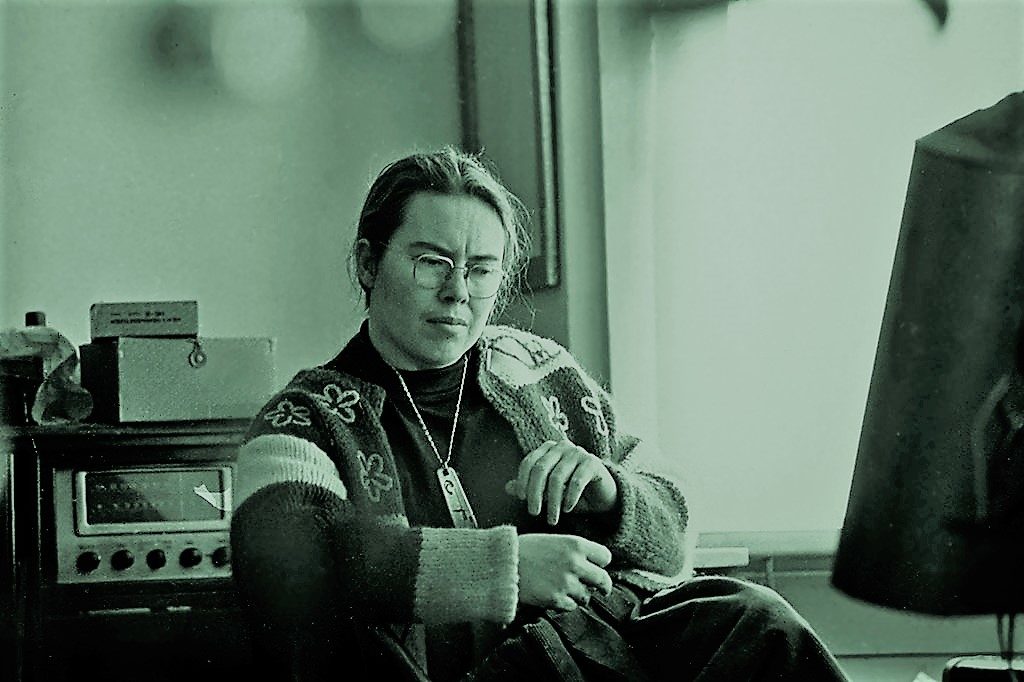

Listening as Activism: The “Sonic Meditations” of Pauline Oliveros
By Kerry O’Brien, Published in The New Yorker
In the late nineteen-sixties, the composer Pauline Oliveros (1932-2016) moved from San Francisco, where she had been a pioneer of electronic music, to San Diego, to start a university job. There, in her mid-thirties, she confronted a culture of political despair. “I was watching my television set when Robert Kennedy was assassinated,” she recounted in a 1977 interview. “The Vietnam War protests and atrocities were at their height. A student at U.C.S.D. sat in the plaza, poured kerosene on himself and burned himself to death . . . I felt the temper of the times. I felt the tremendous fear.”
In response, Oliveros recalled, “I began to retreat. I didn’t want to play concerts. I began to turn inward.” She started singing and playing long, extended drones on her accordion, spending nearly a year on a single note, an A. She found this private music-making to be soothing, both mentally and physically, a respite from the traumatic news of the world. Soon after, Oliveros began to perform again, but mostly privately or in small groups. What remains of those experiments in self-care is a small collection of text-based scores called “Sonic Meditations.” When she published them, in 1971, she shared her goals, which included “expanded consciousness”; later, she would add “humanitarian purposes; specifically healing.”
STORY: Digital Meets Tribal in Fourth World “Possible Musics”

Watch this video on YouTube
Pauline Oliveros & Randy Raine-Reusch – Silence Echoes
Oliveros died on November 24th, 2016, at the age of eighty-four, and the Facebook and Twitter feeds of experimental-music fans were filled with short excerpts from her “Sonic Meditations.” Her eccentric sound exercises—what she once called “recipes” for listening—briefly went viral. One score reads, in its entirety, “Take a walk at night. Walk so silently that the bottoms of your feet become ears.” Like much of her work, Oliveros’s “Meditations” posited listening as a fully embodied pursuit—a posture of attending to sounds and to the world. But her “Meditations” are more than quotable texts. They began as sound and body experiments within a women’s group. Recounting their early history offers a look at the roots of Oliveros’s body-centered politics; in the midst of the US’s current political chaos, her “Meditations” make a timely case for listening as a form of activism.
Even as a young girl, Oliveros was tuning in to her entire environment, what she once called, in a public-radio interview, the “beautiful canopies of sound” that issued from the insects, birds and animals around her; “the whistles and pops” between stations on her grandfather’s crystal radio also had her pricking up her ears. It was this erratic panoply of incidental and liminal sounds that captured her imagination, yet they couldn’t be expressed by conventional musical notation. — New York Times Magazine
STORY: Delia Derbyshire: ’60s Science Fiction Sound Art

Watch this video on YouTube
The difference between hearing and listening | Pauline Oliveros
During her year of practicing drones, Oliveros also began studying Tai Chi, finding the coordination of breath and movement complementary to her music. She encountered Tai Chi at Kairos, a growth center in Rancho Santa Fe. Oliveros began collaborating with her teacher, Al Huang, and assembled a small group to improvise to his work. Kairos was part of the human-potential movement, then booming all along the West Coast—the center was known as “Esalen South,” a reference to its northern neighbor, in Big Sur (the basis for the fictionalized retreat in the finale of “Mad Men”). Course catalogues from Kairos and Esalen during these years enumerate dozens of popular methods for expanding and experimenting with consciousness. One large collection of techniques, known as bodywork or body practices, included methods like Ida Rolf’s Structural Integration and Charlotte Selver’s Sensory Awareness. In his history of Esalen, Jeffrey Kripal explains that such practices “encouraged difference, spontaneous movement, and a kind of moving meditation that prized awareness and consciousness above all else.”
In 1969, Oliveros began studying Kinetic Awareness with the dancer and bodyworker Elaine Summers, in New York. In her method, Summers taught students to become sensitive to signals coming from their bodies, including the ways in which people unconsciously police their own movements. Questioning, for example, why a woman’s hips are permitted to sway only slightly (and a man’s not at all), Summers showed how societal inhibitions can leave lasting physical restrictions in one’s body. She taught awareness through slow, quotidian movements like sitting, standing, lying, and walking—activities that would soon become central to Oliveros’s “Meditations.”
Once she was back in San Diego, Oliveros began to incorporate this bodywork into her improvisational practices, and slowly a new performing group took shape. “The Sonic Meditation group began at the time the women’s-liberation movement was emerging,” Oliveros said in 1977. “I decided it would be good to have women only for a while. They had been held down, musically, so long.” Eventually calling themselves the ? Ensemble, these women began to practice the proto-“Sonic Meditations.” The group gathered weekly at Oliveros’s home, in Leucadia, where their meetings included a mix of text scores, journaling, discussion, and Kinetic Awareness exercises.
STORY: Iannis Xenakis: Musical Sorcery Using Mathematical Totems
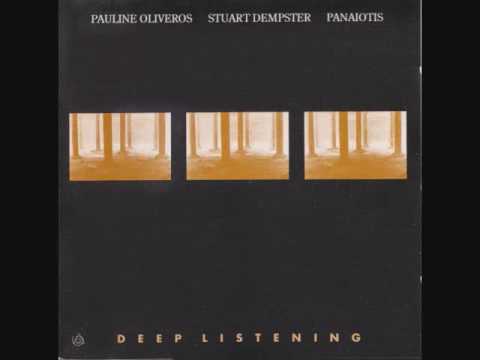
Watch this video on YouTube
In 1988, when Ms. Oliveros and two colleagues — the trombonist, didgeridoo player and composer Stuart Dempster and the vocalist and composer Panaiotis — descended into an extraordinarily resonant disused cistern in Port Townsend, Wash. Their drone-based improvisations were recorded, and selections issued on CD under the title “Deep Listening” in 1989.
Beginning in 1971, Oliveros began designing short programs for each meeting. This was out of necessity: the group had begun to experiment with nonverbal communication, as the scholar Martha Mockus describes in her book on Oliveros. The archived program for the sixth session, dated November 30, 1971, is typical:
- Mirror
- Kinetic Awareness—Make your last audible breath a sung tone
- Circle—Visualize your signature letter by letter slowly. Simultaneously hearing your name. Do this forward, then backwards. (Without sound) See your signature in a selected color. Do these with eyes closed and eyes open.
- Bowl Gong Meditation. If you lose track of the pitch or want to verify your memory hit the gong again.
- Walk once around the room as slowly as possible backwards
- Teach yourself to fly as long as possible
Several of these instructions would develop into the now recognizable text scores from the “Sonic Meditations.” At some point, however, distinctions between musical work and bodywork became blurry. Was Oliveros’s indication to walk “as slowly as possible backwards” an exercise in Kinetic Awareness? Or was it an early version of “Meditation” No. 5 (“Take a walk at night. Walk so silently that the bottoms of your feet become ears”)?
“We listen in order to interpret our world and experience meaning.” — Pauline Oliveros
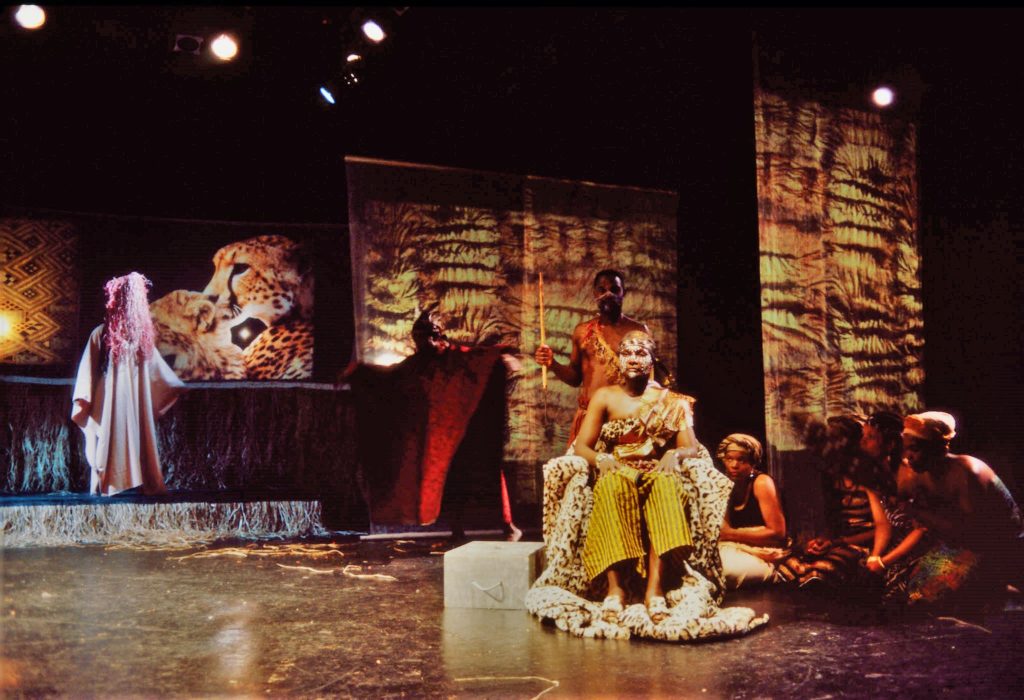

The meditation “Teach Yourself to Fly” asks the performer to observe her breath and eventually allow her voice to sound; the title alludes to the fact that the group’s cumulative breathing sounds can resemble the noise of an airplane taking flight. This text score was akin to the Kinetic Awareness technique of “sounding,” a breath practice in which vocal sounds were added on exhalation. Oliveros later admitted that “Kinetic and Sonic Awareness became intertwined” for her. Perhaps there is little use in differentiating between Kinetic Awareness and a “Sonic Meditation”: in both, the goal was to heal.
Considered as a healing practice—or a “tuning of mind and body”—Oliveros’s “Sonic Meditations” are, to an extent, unique in the history of musical experimentalism. In these works, experiments were not conducted on the music; the music was an experiment on the self. Anyone searching today for the complete box set of “Sonic Meditations” won’t find it, because, as the composer wrote, “music is a welcome by-product” of this composition. The experiments remain in each listener. Oliveros’s aims were clear: these works were intended to be transformational, even therapeutic, enacting lasting changes on the body and mind.
STORY: Brian Eno: A Visual Music of Ambient Melody


While she spent years immersed in introspective experimentation, Oliveros’s “Sonic Meditations” shouldn’t be mistaken for escapism or disengagement. The composer described listening as a necessary pause before thoughtful action: “Listening is directing attention to what is heard, gathering meaning, interpreting and deciding on action.” Following her years of private group experimentation, Oliveros began to share her “Sonic Meditations” in print and in performance.
When she first published them, in a 1971 issue of the avant-garde music magazine Source, the composer opened with a radical introduction: “Pauline Oliveros is a two-legged human being, a female, lesbian, musician, composer, among other things which contribute to her identity.” She understood the specific force of this revelation: in 1974, she wrote, “How many of you out there think you are in the minority? If everyone came out of the closet the world would change overnight.” That same year, in her expanded “Sonic Meditations” score, she added, “Healing can occur . . . when one’s inner experience is made manifest and accepted by others.”
STORY: Harry Partch: Genesis of a Musical Outsider
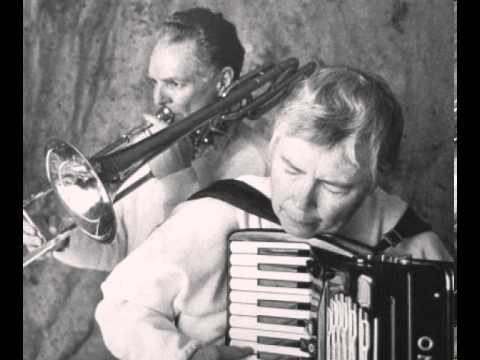
Watch this video on YouTube
Pauline Oliveros – A Love Song
Oliveros’s activism joined second-wave feminism’s rallying cry that “the personal is political,” a call for action rooted in a politics of the body. In coming out publicly, she was attuned to her own experience, as well as to the societal need for women to speak up when ready. In the coming years, Oliveros would share her “Meditations” with many groups; in the late eighties, at the Michigan Womyn’s Music Festival, she led a crowd of thousands in a “Tuning Meditation.” And in the nineteen-nineties, she began teaching “deep-listening” retreats for “ear-minded people.”
In the collection “Prayers for a Thousand Years,” from 1999, Oliveros joined hundreds of teachers and activists, each offering advice for the coming millennium. Oliveros’s plea? “To create an atmosphere of opening for all to be heard, with the understanding that listening is healing.” This generous, lifelong commitment to listening was, perhaps, her most enduring “Sonic Meditation”: approaching the world with ears wide open, with as much courage as one could muster, pausing when necessary, and listening deeply.
Kerry O’Brien is Ph.D. candidate in musicology at Indiana University. She lives and writes in Seattle.
Updated 21 February 2021







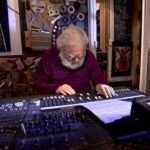






Pingback: Creators of the Cool: Miles Davis and Gil Evans
Pingback: Pauline Oliveros // 1932-2016 – Female Sound Artists of the 20th Century